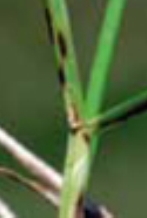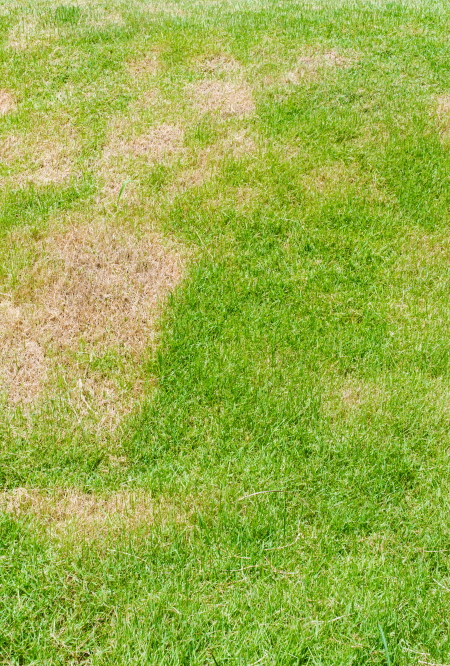Leaf Spot and Brown Patch

Leaf Spot
Leaf Spot – or “melting out” in severe cases – is a common turfgrass disease in Canada, affecting a wide range of different grass plants. In northern climates, Leaf Spot damage occurs first in the spring and again in late summer to early fall.
Identifying Leaf Spot
Leaf Spot can be identified by purplish-brown to black colored spots with tan centers on the leaf blades and sheaths of your turfgrass. As these dark spots or lesions expand, the center becomes lighter in color with a dark brown to black border. The lesions may also be surrounded by a yellow halo and the lower leaves can eventually become shriveled and wilted.Severe Leaf Spot infections can cause thinning of a turf stand, or “melting out.” On cool season grasses, melting out typically follows the appearance of leaf spot.
Treatment
- Increase the mowing height
- Avoid excessive application of fertilizers with water-soluble nitrogen in the spring.
- Minimize the amount of shade and increase air flow
- Irrigate as infrequently as possible – when irrigation is performed, irrigate turf deeply

Brown Patch
Brown Patch – sometimes referred to as Rhizoctonia Blight – is a hot weather turfgrass disease. Brown Patch affects most turfgrasses throughout our region, with damage signs appearing during late summer.
Identifying Brown Patch
Brown Patch typically produces rings or patches of browned out turfgrass that can measure from 5 inches to 10 feet in diameter. It may also produce thin, brown to purple borders around the margins of the patches. These areas are commonly referred to as “smoke rings.” After the grass leaves die, new leaves can emerge from the surviving crowns. On wide bladed species of turfgrass, leaf lesions develop with tan centers and dark brown to black margins. Symptoms of Brown Patch can vary depending on the species, weather conditions and intensity of turfgrass management.
Treatment
- Use low to moderate levels of nitrogen-based fertilizers with a balanced fertility program
- Avoid high nitrogen applications when the disease is active
- Reduce the amount of shade and increase the amount of air flow to dry turf more quickly
- Irrigate turf early in the day and improve soil drainage
- Reduce thatch